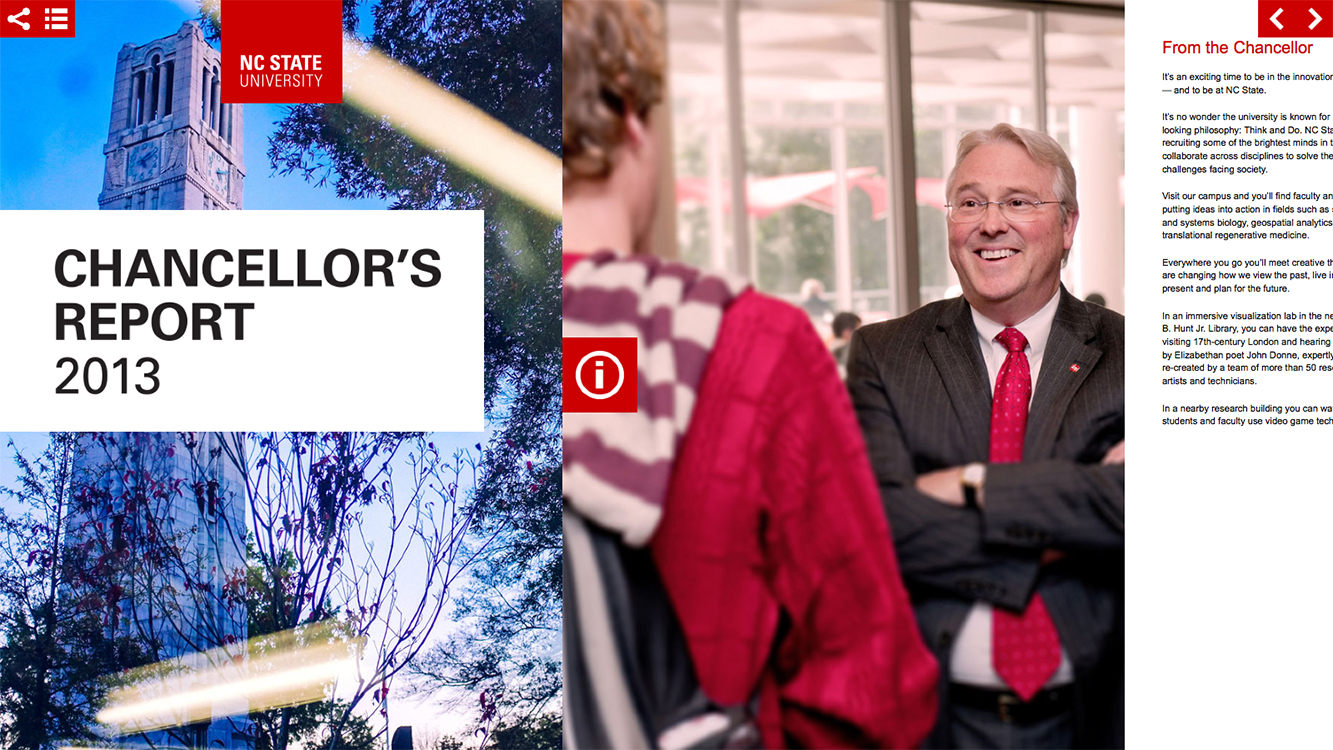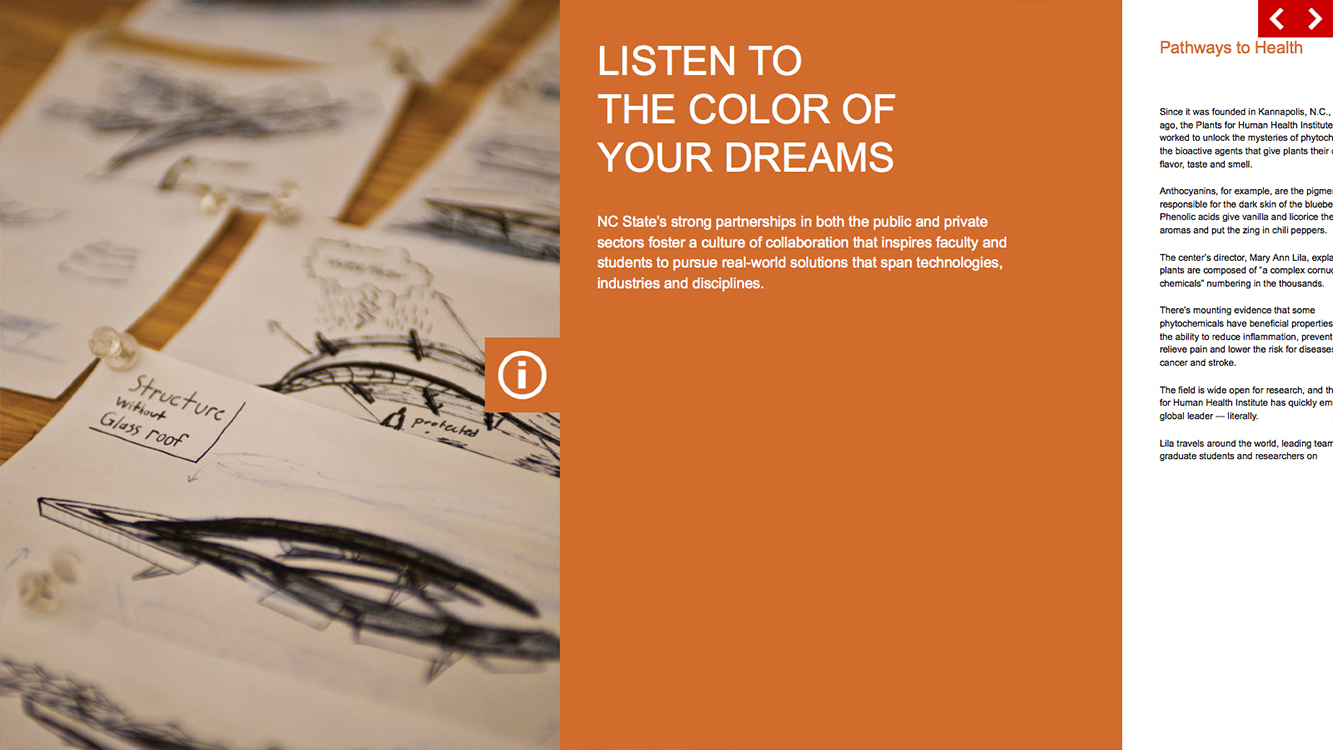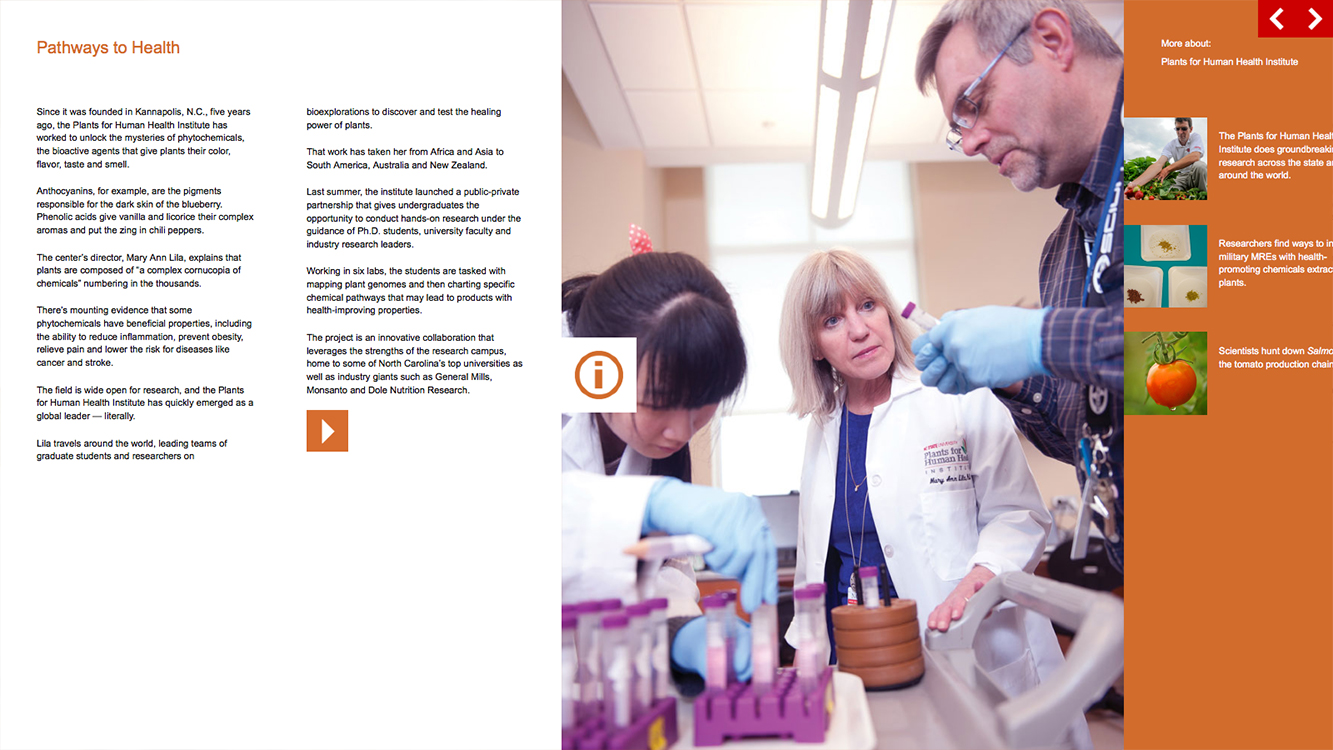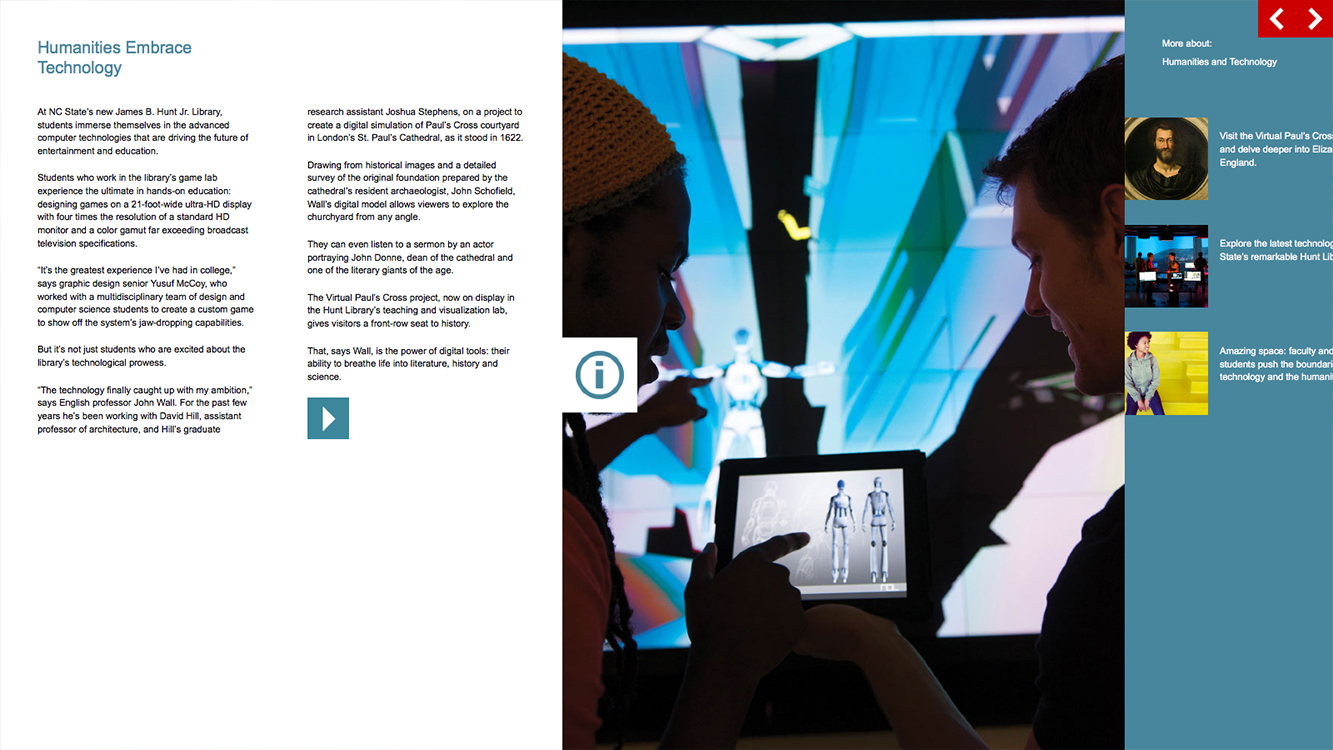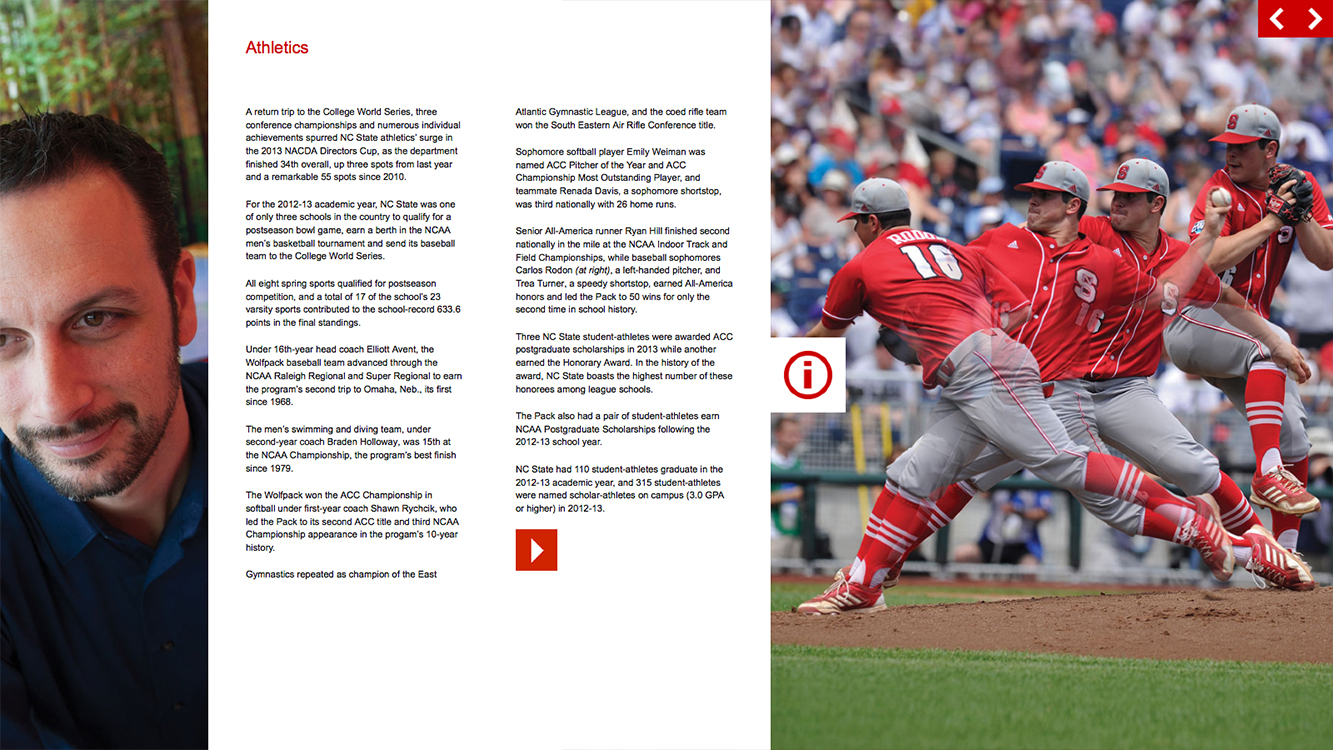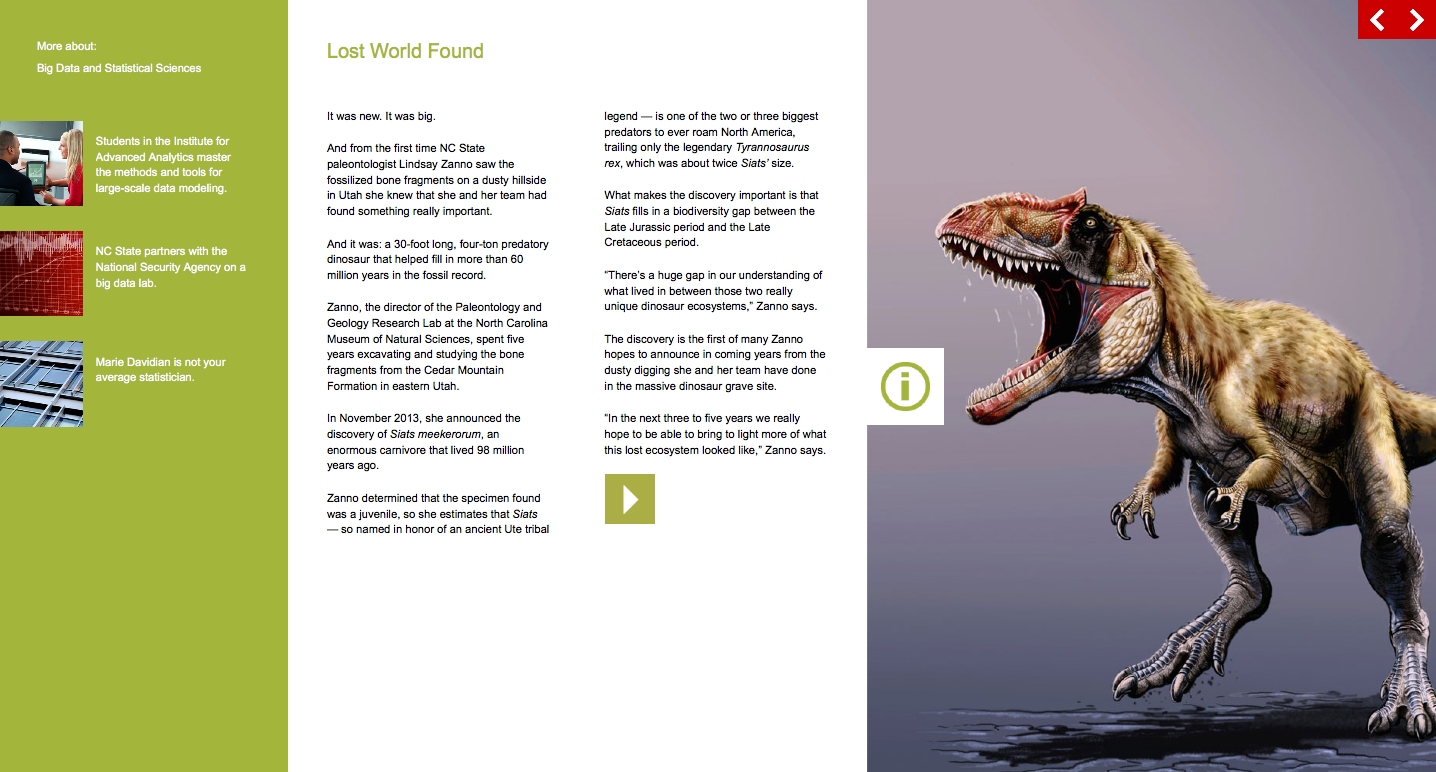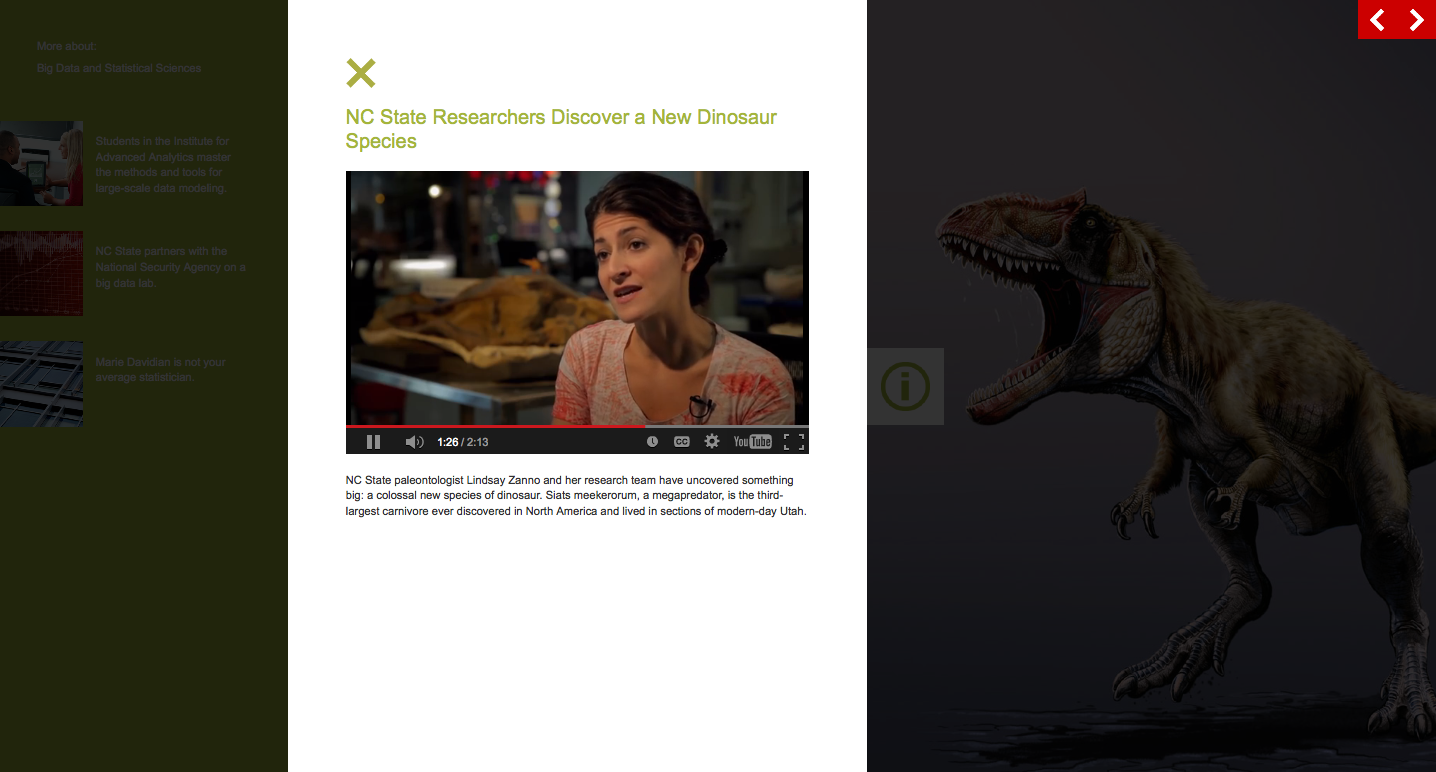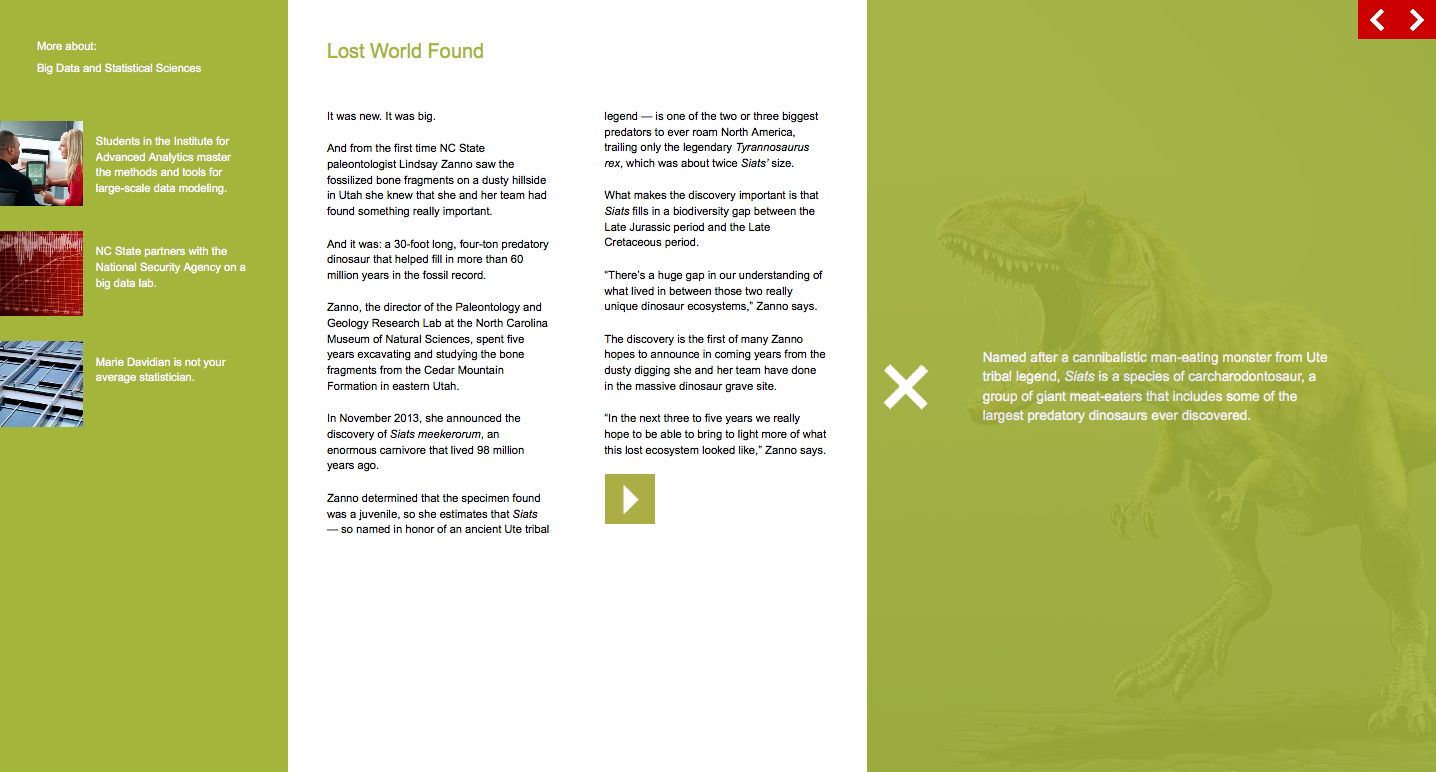Chancellor's Communications
The overall goal of the Chancellor's Communications are to educate, inform and engage key stakeholders by showing the impact of the university’s solution-driven research, technology and scholarship. The 2013 Chancellor's Report also provides University Communications with a vehicle for reflecting and modeling NC State’s new brand platform, which is bold, forward-looking and innovative.
The name of the game is modular design
Though traditional print elements were utilized for some of the communications, they took a back seat to the heavy emphasis placed on responsive web integration that was able to take a singular system and port it across several platforms.
Initial wire frames and site mapping. Careful attention was also paid to how the information could easily configure to a myriad of scale.
It's been an uphill battle trying to get an older audience who have been conditioned to get "important communications" on paper most of their lives to adapt to the ever changing and responsive needs of today's multimedia approach to information delivery.
That said, we must reflect NC State’s forward-thinking commitment to set an example of how peer to peer communications engage. Whether it be state or federal legislators, peer university administrations, corporate partners, or university donors, we must continue to represent what it means to be the research enterprise of choice.
We must not only follow trends, but we must be a beacon, always evolving the electronic versions of the Chancellor's Communications.
We must design them to be flexible, flowing into any shape a device may require, yet still retaining their boldness and graphical solidity.
Keep it on the grid
Wire frames exploring how the 2013 Chancellor's Report could use a gridded system in order to maintain integrity and fluidity across all digital platforms.
Digital first.
That is the approach to everything we do at NC State. And the 2013 Chancellor's Report was no exception. In reflecting NC State's modern personality and brand, we use blocks, grids and structured elements. One of the main reasons why we harness this direction is because it translates splendidly to digital design. Through use of the grid, we can navigate our users through our narrative, no matter what container it may be in.
"Don't get set into one form, adapt it and build your own, and let it grow, be like water. Empty your mind, be formless, shapeless — like water. Now you put water in a cup, it becomes the cup; You put water into a bottle it becomes the bottle; You put it in a teapot it becomes the teapot. Now water can flow or it can crash. Be water, my friend."
- Bruce Lee, Bruce Lee: A Warrior's Journey
Adaptable Reporting
The unusual horizontal navigation of the digital report displays especially well on tablet readers.
Perhaps the most non-traditional approach the 2013 Chancellor's Report took was that it was based primarily on a horizontal navigation. When on the larger devices like desktop computers, laptops and landscape set tablets and mobile devices, it took this horizontal form. Users moved from left to right and were engaged in content along the way, much as they would be in a traditional book, but without the limitations of physical page breaks.
When tablets and mobile devices were set in portrait mode, the report responded to this shift and adapted to a more typical web browser.
Let's take a closer look at some of the configurations of the Chancellor's Report that we have been allowed thanks to the utilization of the grid.
Desktop Configuration
Tablet and mobile configurations
Inclusion of multimedia
Additional entry points to content
Social Media: On social media, we cited the Think-and-Do spirit that animates all the work spotlighted in the annual report, from the dinosaur discovery to the search for new plant-based medicines.
Homepage Story: A feature story and a long-term brite on ncsu.edu ensure that the report gets noticed by a wider audience through our most visible platform: the Web.
Email: A widely distributed email with links to the digital report limited the cost associated with physical distribution of printed materials.









